Creating a lush, green lawn is a goal for many homeowners, and choosing the right type of grass is a crucial step in achieving this. The type of grass you select can significantly impact the overall health and appearance of your lawn. Factors such as climate, soil conditions, and maintenance preferences play a vital role in determining the best grass variety for your specific needs. In this comprehensive guide, we’ll explore the 10 best types of grass for your lawn, providing insights into their characteristics, ideal growing conditions, and tips for successful maintenance.
10 Best Types of Grass for Your Lawn
1. Kentucky Bluegrass (Poa pratensis)
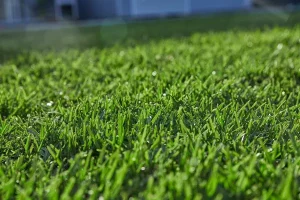
Kentucky Bluegrass is a cool-season grass that thrives in regions with cold winters and moderate summers. Known for its rich green color and fine texture, this grass variety is a popular choice for lawns in the northern United States. It establishes a dense, carpet-like turf and is known for its tolerance to heavy foot traffic. Kentucky Bluegrass requires well-draining soil and benefits from regular watering and fertilization.
2. Bermuda Grass (Cynodon dactylon)
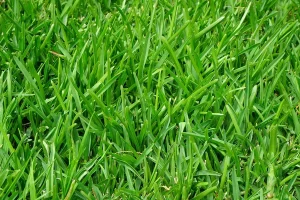
For those residing in warmer climates, Bermuda Grass is an excellent warm-season option. Known for its heat tolerance and rapid growth, Bermuda Grass establishes a dense and resilient turf. It can endure heavy foot traffic, making it suitable for lawns, sports fields, and high-traffic areas. Bermuda Grass requires full sun for optimal growth and is relatively low-maintenance, making it a favorite among homeowners in southern regions.
3. Fescue (Festuca spp.)
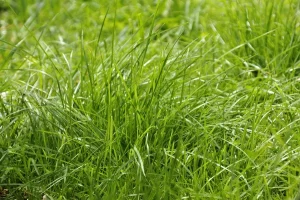
Fescue is a versatile grass variety that includes several species such as Fine Fescue, Tall Fescue, and Creeping Red Fescue. These grasses are known for their adaptability to a wide range of climates and soil types. Fine Fescue, in particular, is well-suited for shady areas, while Tall Fescue thrives in full sun. Fescue varieties are known for their fine texture and ability to maintain green color throughout the year.
4. Zoysia Grass (Zoysia spp.)
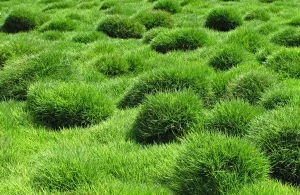
Zoysia Grass is a warm-season grass that combines drought tolerance with a dense, carpet-like appearance. It is well-suited for lawns in the transitional zone, where both warm and cool-season grasses can be grown. Zoysia Grass establishes a thick turf that withstands foot traffic and provides excellent weed resistance. This grass type requires moderate maintenance and prefers full sun but can tolerate partial shade.
5. Ryegrass (Lolium spp.)
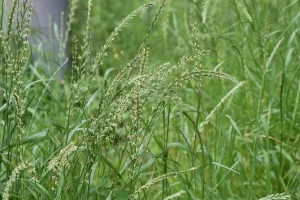
Ryegrass is a cool-season grass that is often used for overseeding warm-season lawns to maintain green color during the cooler months. It establishes quickly and is known for its fine texture and vibrant green color. Ryegrass varieties, including Annual Ryegrass and Perennial Ryegrass, are suitable for lawns in northern regions. They require well-draining soil and regular watering for optimal growth.
6. St. Augustine Grass (Stenotaphrum secundatum)
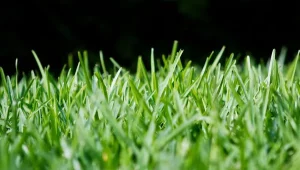
St. Augustine Grass is a warm-season grass that thrives in hot and humid climates. Known for its coarse texture and wide blades, it forms a dense and carpet-like turf. St. Augustine Grass is shade-tolerant, making it suitable for lawns with limited sun exposure. It requires regular watering and fertilization to maintain its lush appearance, making it a popular choice in the southern United States.
7. Buffalo Grass (Buchloë dactyloides)

Buffalo Grass is a warm-season grass native to the Great Plains and is well-adapted to arid climates. It is drought-tolerant and requires minimal water compared to other grass varieties. Buffalo Grass forms a dense turf and has a fine texture, creating a soft and inviting lawn. While it may go dormant in extreme heat, it greens up quickly with adequate water. This grass type is suitable for low-maintenance landscapes.
8. Centipede Grass (Eremochloa ophiuroides)
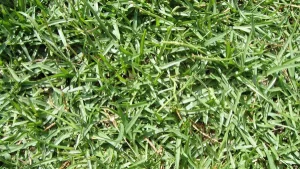
Centipede Grass is a warm-season grass known for its low-maintenance requirements and tolerance to acidic soils. It has a coarse texture and forms a dense turf with a distinctive medium green color. Centipede Grass is well-suited for lawns in the southern United States and requires minimal fertilization. It prefers full sun but can tolerate partial shade, making it a versatile choice for various landscapes.
9. Bahia Grass (Paspalum notatum)
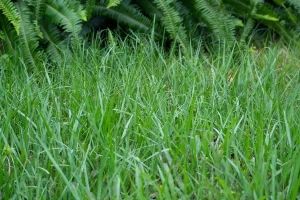
Bahia Grass is a warm-season grass that thrives in the southern United States and other tropical and subtropical regions. Known for its heat tolerance and resilience, Bahia Grass forms a tough turf that withstands heavy use. It is drought-tolerant and low-maintenance, making it suitable for homeowners seeking an easy-care lawn. Bahia Grass performs well in full sun but can tolerate partial shade.
10. Tall Fescue (Festuca arundinacea)
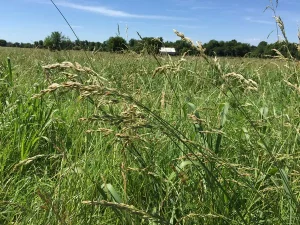
Tall Fescue is a cool-season grass that is valued for its adaptability to a wide range of climates and soil conditions. It has a coarse texture and forms a robust turf that is resistant to disease and pests. Tall Fescue is suitable for lawns in the northern and transitional zones, and it maintains its green color throughout the year. It is relatively low-maintenance and can tolerate moderate foot traffic.
Selecting the Right Grass for Your Lawn
Choosing the best type of grass for your lawn involves considering various factors to ensure optimal growth and appearance. Here are some key considerations:
Climate: Determine whether you are in a cool-season or warm-season climate, as this significantly influences the type of grass that will thrive in your lawn.
Soil Type: Consider your soil type and drainage capabilities. Some grass varieties are more adaptable to specific soil conditions, while others may require amendments for optimal growth.
Sunlight: Assess the amount of sunlight your lawn receives. Some grass types thrive in full sun, while others are better suited for shaded areas.
Maintenance Preferences: Evaluate your willingness to invest time and effort into lawn maintenance. Some grass varieties are low-maintenance, while others may require more care to thrive.
Traffic Tolerance: Consider the level of foot traffic your lawn will experience. Certain grass types are more resilient to heavy use and are suitable for active households or areas with frequent activities.
Watering Requirements: Take into account the water availability in your area and the amount of irrigation your chosen grass type may need. Drought-tolerant varieties can be advantageous in water-scarce regions.
Tips for Successful Lawn Maintenance
Once you’ve selected the best type of grass for your lawn, maintaining its health and appearance requires consistent care. Here are some tips for successful lawn maintenance:
Regular Mowing: Keep your lawn at the recommended height for your chosen grass type. Mowing at the appropriate height promotes healthy growth and helps shade out weeds.
Adequate Watering: Provide your lawn with sufficient water, especially during dry periods. Water deeply and infrequently to encourage deep root growth.
Fertilization: Apply fertilizer according to the specific needs of your chosen grass type. Follow recommended guidelines to avoid over-fertilization, which can lead to excessive growth and thatch buildup.
Aeration: Periodically aerate your lawn to alleviate soil compaction and promote better air and water penetration to the roots.
Weed Control: Implement a weed control strategy to prevent unwanted plants from competing with your grass for nutrients and sunlight.
Disease and Pest Management: Keep an eye out for signs of diseases or pest infestations and take prompt action to address any issues.
Overseeding: In cooler climates, consider overseeding warm-season lawns with cool-season grasses to maintain green color during the colder months.
Appropriate Irrigation: Water your lawn during the early morning or late afternoon to minimize evaporation and ensure efficient water absorption by the soil.
See Also: You May Not To Know:10 Best Indoor Plants
Conclusion
Choosing the best type of grass for your lawn is a decision that requires careful consideration of various factors. By understanding the characteristics of different grass varieties and assessing your specific needs, you can create a thriving and beautiful lawn. Whether you opt for cool-season grasses like Kentucky Bluegrass and Fescue or warm-season varieties like Bermuda Grass and Zoysia Grass, proper maintenance is key to ensuring a healthy and attractive lawn year-round. Take the time to invest in your lawn’s health, and you’ll reap the rewards of a lush, green oasis right outside your doorstep.
You Might Be Interested In:










![10 Most Richest Cities in the United States [Revealed!]](https://www.validdownloads.com/wp-content/uploads/2023/12/Manjula-Pothos.webp)














